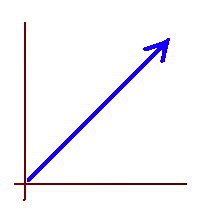Updating my "Recommended Books" web page
Last week I reorganized my “Recommended Books” web page, now including seven calculus titles. Three of these books I have come across through my students: Stewart’s Calculus; Larson/Hostetler/Edwards Calculus: Early Transcendental Functions; and Frank Blume’s Applied Calculus for Scientists and Engineers.
Stewart’s Calculus book is popular among college professors; many students have it as their textbook. Of course it is a very good book but personally I prefer the way the topics are organized in the Larson/Hostetler/Edwards textbook.
Then there are a few books I was familiar with since I was in college myself. Spivak’s Calculus is an excellent book with superb explanations of the concepts and the proofs. This is a classic book for mathematicians. The vector calculus books: “Vector Calculus” by Marsden & Tromba; and “Div, Grad, Curl and All That” by Schey are also very good, with very clear explanations and examples.
Among these calculus books I listed a book that is not a calculus book per se: “e: The Story of a Number” by Eli Maor. Here there are many illuminating stories about the number e, the base of the natural logarithms. The number e is customarily defined as a limit in calculus and it is used extensively in exponential functions and hyperbolic functions, as well as in many types of differential equations. Many students are often mystified by the number e and its strange looking definition, because e is a transcendental number, as pi is but e does not have an obvious geometrical point of reference like the circle to understand its meaning. Eli Maor in its book does an outstanding job of illuminating many of the relationships the number e has with the real world and with other parts of math.
Multiples with no large digits
-
Here’s a curious theorem I stumbled across recently [1]. Take an integer N
which is not a multiple of 10. Then there is some multiple of N which only
con...
6 hours ago





No comments:
Post a Comment